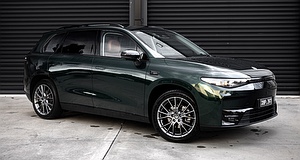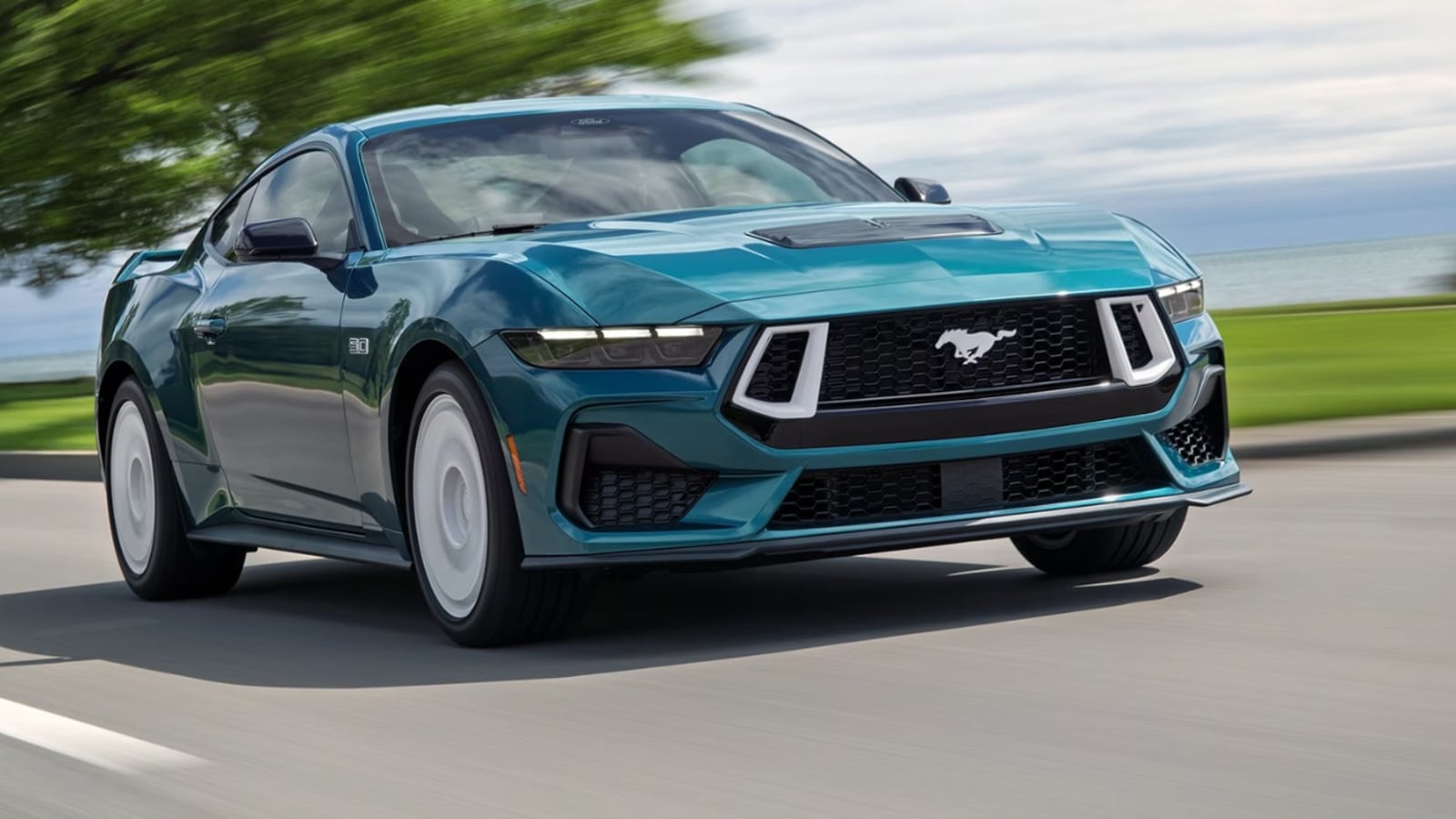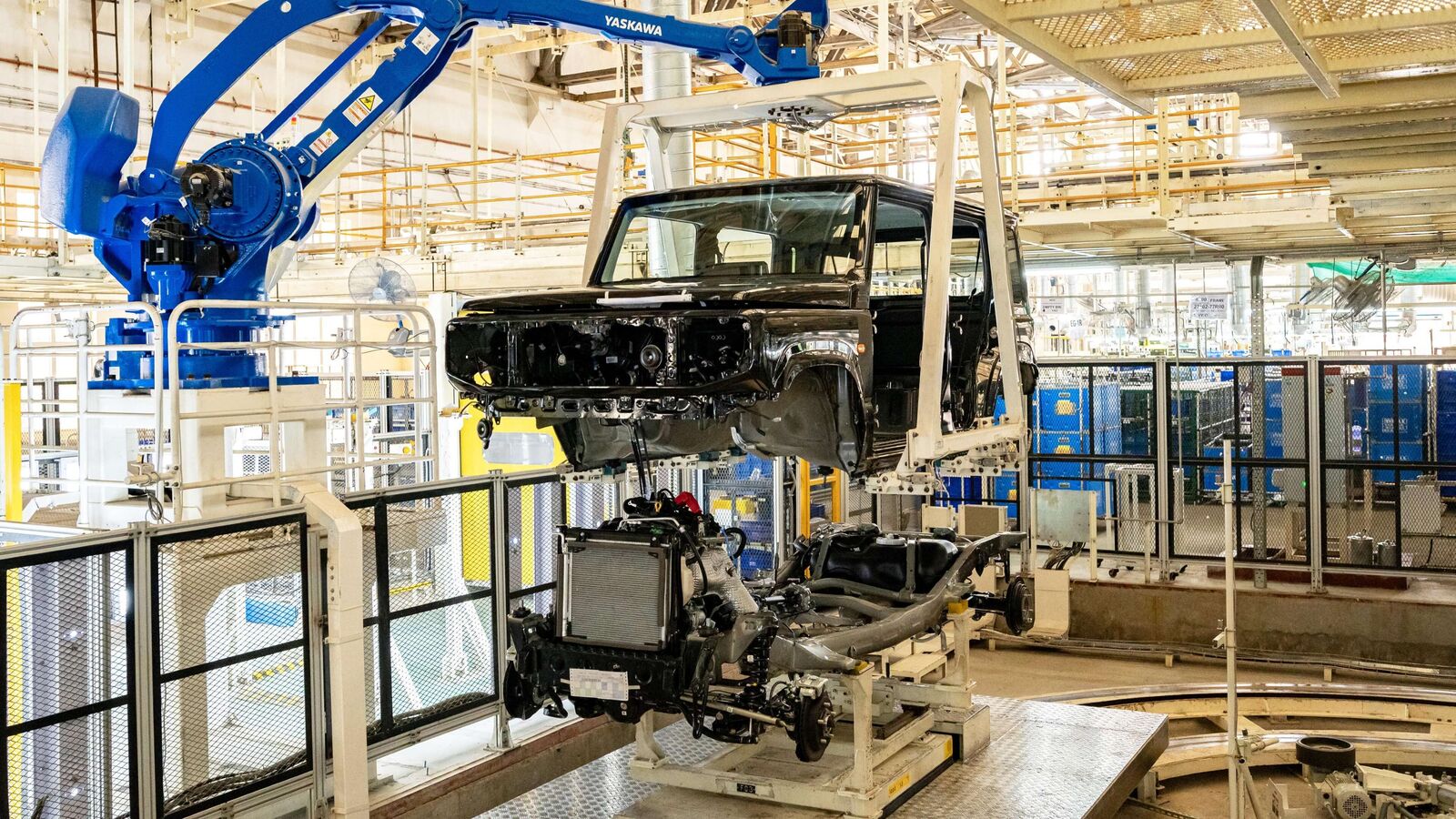Overview
LEAPMOTOR is a relatively new brand in Australia, and one we had high hopes for. Born in China, but backed by US automotive giant Stellantis, we had hoped it could buck the soulless, phone-on-wheels experience most new EVs offer.
The clear benefit of the partnership is access to the Stellantis dealer network, with a dozen sites already selling the brand and plans to expand that number across 2025. Leapmotor must build pretty good cars then, if Stellantis decided to throw a cool couple-of-billion at it, right?
Leapmotor’s first local model, the C10, is certainly a promising affair on paper. It looks better than a Tesla Model Y, it’s priced at sub-$50k, it offers a range of 420km and it appears to be brimming with technology. As we discovered, though, its flaws quickly stack up.
The C10 is offered in two trim grades, with the base-spec Style priced from $45,888 and the flagship Design trim priced from $49,888 plus on-road costs. We’re testing the Design variant, which at the time of writing is offered for $51,500 drive-away, which includes 12 months of complimentary charging.
Both grades of the C10 are powered by a 160kW/320Nm electric motor driving the rear wheels, underpinned by a 69.9kWh battery, with a WLTP range of 420km. Leapmotor claims a 0-100km/h time of 7.5 seconds, which feels about right because this is not a particularly rapid EV.
Inside, a 10.25-inch digital driver display, paired with a massive 14.6-inch central infotainment screen, provide all the critical information. The centre screen handles just about everything, with small steering-wheel-mounted toggles taking care of minor adjustments like volume and side mirror placement.
A panoramic glass roof with an electric sunshade makes for a light-filled cabin, which is incredibly spacious – even with a large baby seat fitted. A party trick of the C10 is its ability to recline the front seats completely flat.
Safety technology is plentiful, with the Leap Pilot driver assistance system at its core. A total of 12 sensors, with 17 safety functions, are included. Among the safety features is advanced driver drowsiness, attention and distraction warnings that rely on an A-pillar-mounted camera.
Leapmotor offers a seven-year/160,000km warranty on the vehicle and an eight-year/160,000km warranty on the high-voltage battery.
Driving Impressions
We weren’t particularly fond of Leapmotor’s first local model – especially when benchmarked against well-sorted midsize SUV alternatives like the Kia EV5 or Tesla Model Y. Sure, the Leapmotor is cheap for what it is, but its downsides outweigh the value it offers.
Across the first half-an-hour of driving, it was hard to fault the C10 and on the surface it ticked plenty of boxes. Sharp steering, firm chassis, quiet ride, and it goes and stops like an electric midsize SUV should. Tick, tick, tick.
But the cracks start to show after a little more seat time. The steering, while sharp, is twitchy off-centre and doesn’t unwind or ‘self-steer’ very well on corner exit. While the chassis feels firm, likely a result of the stressed-member battery setup, it does exhibit a decent amount of body roll in corners and by that point the Dunlop rubber no longer holds its tongue.
Then there’s the lazy take-off, probably the result of torque shaping but the sluggishness is frustrating when you want a bit of EV punch off the line. It’s the best part about an electric vehicle, and yet the C10 refuses to launch with any sort of enthusiasm.
The biggest issue we encountered was during brake testing. Under hard braking, there appears to be a hesitation or confusion as the car feeds in regen. It is likely related to the ‘smooth-stop’ setting, which aims to smooth out the braking effort, but it feels like the brake system takes a moment to decide you want to stop quickly.
After around 100km of inner-city driving, establishing all the above gripes, we worked out that this is an EV that prefers to be driven in Eco mode. It wants to commute; it doesn’t want to be driven for enjoyment. Putt around like it’s a boring A-to-B EV, and most of its flaws fade away.
The technology issues, however, remain ever present.
The last car I tested without using CarPlay, and that was because I couldn’t get it to pair reliably, was a 700hp Aston Martin. A lacking infotainment system can be forgiven in a car like that. But in a high-tech electric SUV that is looking to compete with the likes of Tesla, Kia, BYD? C’mon.
I actually opted to put my iPhone in one of the centre cupholders, glancing down at Google Maps, which felt wrong when there was a 14.6-inch infotainment screen within arm’s reach. How Leapmotor didn’t predict that a lack of smartphone mirroring would be an issue is beyond me.
There’s also a little red light, which indicates the A-pillar-mounted camera is watching you, and it’s flat-out eerie. How are you supposed to relax with ‘big brother’ watching? It’s also very quick to remind you that you’re not watching the road, as you try to navigate the centre screen (or look to assess approaching traffic).
This is a kick in the teeth, because the centre screen controls just about everything, from the air-con to the drive modes. If glancing at the screen for a split second constitutes driver distraction, perhaps Leapmotor should have opted for some physical buttons that can be fiddled with using muscle memory.
The ADAS system as a whole is quite neurotic, beeping and carrying on in such a way that it quickly turns a casual drive into a confusing assault on the senses. “Just get me home”, I found myself thinking, on more than one occasion, eager to swap the C10 out for one of the older cars or motorcycles I’ve deliberately held onto for their analogue appeal.
Micromanaging ADAS systems are not uncommon, but they’re the reason people aren’t properly using the technology. People either turn them off, or they ignore the alerts, so what’s the point?
Another of the C10s flaws is its HVAC system, which just doesn’t seem to do as it’s told. We rarely, if ever, criticise the HVAC systems on a car, but this system just required so many inputs to get the temp right across the front and rear rows. Physical buttons would likely solve this.
There are good things, too, of course. The audio system is great and coupled with a fairly quiet cabin it offers an immersive listening experience. Classical music calms our baby, who was aboard for some of the testing, and the 12-speaker system put us right there.
We can confirm the range claims, after a week of normal driving, are also accurate. The C10 returned an average energy consumption of 16.2kWh/100km, which equates to a real-world range of 431km – comfortably exceeding the claimed 420km range.
If it was up to us though, we’d spend a little more and buy a Tesla Model Y (from $55,900) or a Kia EV5 (from $56,770), at least until Leapmotor addresses the various issues with the C10 and, in doing so, proves it can take serious feedback onboard.
The good news for Leapmotor, and for buyers of the brand who have already taken the leap, is that the majority of the issues we found with the C10 could probably be fixed with a software update.
With smartphone mirroring, an improved user interface, ADAS improvements and tweaks to the braking (specifically the smooth-stop function), the C10 would be an appealing sub-$50k option.
Leapmotor is launching its C10 REEV (Range Extender Electric Vehicle) this month, with its compact B10 SUV to follow later this year, which we hope brings the improvements needed to put the brand on the front foot.




